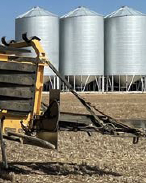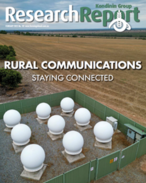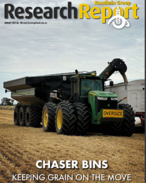Several important features of establishing an economic business case must be understood at the outset.
1.8.1 The business case is incremental
The business case is concerned with the change in farm net returns that results from undertaking the particular carbon farming activity. This means that you will need to estimate whole-farm returns with and without the project.
Where carbon farming is an entirely new activity, this will be relatively easy. Where it replaces other activities (or interacts closely with them), the task will be more difficult and you will need to carefully consider the opportunity costs involved.
1.8.2 The business case is quantitative
Ultimately, a business case needs to be quantitative. It needs to build on numbers. While a business case will have many qualitative elements, as well as elements that are hard to quantify, a purely qualitative business case does not provide a sound basis for decision-making.
1.8.3 The business case is information hungry
A consequence of the need to quantify is that the business case will be information hungry. Because carbon farming is a relatively new area, much of the quantitative information will be hard to find, so it will be important to cast the information net very wide. This manual suggests a variety of quantitative information sources.
As in all business planning, there is a trade-off in how much information should be collected to establish the business case. This manual illustrates some short cuts that can be taken in considering whether it is worthwhile putting the effort into collecting additional information.
1.8.4 The business case is a type of benefit-cost analysis
In a broad economic sense, a business case is a form of benefit-cost analysis. Rather than being concerned with public policy, it focuses on the range of benefits and costs from a private action (albeit a private action that may have external spillovers, such as some co-benefits).
Two good sources of information on benefit-cost analysis are:
-
at the formal end of the spectrum, The Handbook of Cost-benefit Analysis, published by the Australian Government, updated in 2006, and available from the website of the Department of Finance HERE
-
at the less formal end of the spectrum, Making Great Decisions in Business and Life, a popular economics book by David Henderson and Charles Hooper - HERE
Explore the full Workshop Manual: The business case for carbon farming: improving your farm’s sustainability (January 2021)
Read the report
RESEARCH REPORTS
1. Introduction: background to the business case
This chapter lays out the basic background and groundwork of the manual
RESEARCH REPORTS
1.2 Being clear about the reasons for participating
Introduction: background to the business case
RESEARCH REPORTS
1.4 Working through the business case for carbon farming
Introduction: background to the business case
RESEARCH REPORTS
1.5 Factors determining project economics
Introduction: background to the business case
RESEARCH REPORTS
1.8 Important features of the business case
Introduction: background to the business case
RESEARCH REPORTS
2. How carbon is farmed under the ERF
This chapter considers in detail the activities that constitute carbon farming
RESEARCH REPORTS
2.5 Carbon farming under the Emissions Reduction Fund
How carbon is farmed under the ERF
RESEARCH REPORTS
3. The policy context and the price of ACCUs
This chapter takes a broad look at the policy context for carbon farming






















